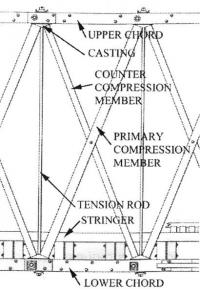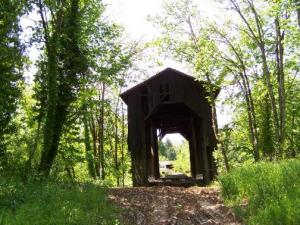-
Your Government
-
- Mayor & City Council Street Improvement Funding Ad Hoc Committee City Charter and Code Agendas and Minutes City Meetings Calendar Job Opportunities Volunteer Opportunities
- Boards or Commissions Audit Committee Budget Committee Historic Preservation Commission Planning Commission Urban Forestry Committee VisionKeepers Youth Advisory Council Federal, State and County Government Links City Information Kiosk
- City Budgets Annual Audits Election Information Public Records Friday Update Vision 2037 Homelessness
-
-
City Departments
-
- City Manager Friday Update Elections Public Records Information Kiosk Finance Audits Budgets Utilities Utility Service Forms Pay Bill Online
- Public Works & Dev. Public Works Construction Corner Hydrant Flushing Program Pothole Spotter Leaf Pickup Program Annual Tree Branch Pickup Water Quality Reports System Development Charges Community Development Pedestrian and Bicycle Plan Planning and Landuse Building Department Emergency Management Main Street Refinement Project
- Cottage Grove Armory Community Center Library Middlefield Golf Course Municipal Court Peer Court Police
-
-
Doing Business
-
- City Charter and Code Building and Development Development Code Building Department Landuse & Zoning Applications System Development Charges
- Lane Business Link Chamber of Commerce Business Licenses Cottage Grove Community Development Corporation Industrial Park
- Bids and RFPs Projects Forms and Permits Utilities Information Recycling Information
-
-
For Visitors
-
- Chamber of Commerce Community Links Travel & Recreation Swimming Pool Travel Lane County Cottage Grove Lake Dorena Lake Cycling Opportunities Row River Trail Umpqua National Forest - Cottage Grove Ranger District Oregon Department of Transportation Trip Check
- Events and Activities City Meetings Calendar Community-Wide Calendar Covered Bridges Chambers Covered Railroad Bridge Covered Bridges Scenic Bikeway Library Middlefield Golf Course Cottage Grove Disc Golf Course
- Cottage Grove Armory Schools Area School Links Cottage Grove Hospital Public Safety Police Fire City Information Kiosk
-
-
Community Resources
-
- Job Opportunities Volunteer Opportunities Utilities Information Alerts and Notifications Email Subscriptions Events and Meetings Agendas and Minutes City Meetings Calendar City Wide Events Calendar Services Directory
- Contact the City Submit a Request or Concern City Offices Staff Directory Documents and Forms Documents and Reports Forms and Applications Pothole Spotter Emergency Preparedness Emergency Management Flood Information
- Social Media Facebook Twitter YouTube In the News Friday Update City News Yard of the Week Yard Sales
-
Chambers Railroad Bridge
The Chambers Railroad Bridge is the only remaining covered railroad bridge in Oregon. It is believed to be the only remaining covered railroad bridge west of the Mississippi River. The Chambers Bridge is a Howe Truss bridge (see explanation of a Howe truss below).
The bridge was constructed in 1925 by lumberman J.H. Chambers to transport logs across the Coast Fork Willamette River to his sawmill on the east side of the bridge. The bridge was in operation from 1925 to 1951. In the 1950's the railroad was sold for scrap and the bridge was no longer used. The bridge was in private ownership until December 2006, when the City of Cottage Grove finally secured full ownership of the bridge. The bridge is listed on the National Historic Register (NRIS no.79002081).
While in private ownership, no maintenance was performed and significant damage and decay occurred to the bridge. The only reason the bridge remained standing was because it was constructed using oversized timbers to support the heavy loads of the steam locomotives and railcars loaded with logs. The oversized materials used in the original construction of the bridge added significant cost to the restoration efforts.
In addition to acquiring the bridge the City pursued the ownership of property on the east end of the bridge. As a result, sufficient property on the east end has been donated to the City for access and development of a park. Coupled with the City’s ownership of the land on the west end of the bridge full access and use of the bridge was secured. The bridge was restored to serve as an additional pedestrian and bicycle crossing on the Coast Fork Willamette River.
In 2006 the bridge had experienced significant damage and decay and was leaning to the upriver side. Concern existed that if restoration work is not begun quickly the historic treasure of Oregon’s only remaining covered railroad bridge would be lost.
The Chambers Covered Railroad Bridge was awarded a $1,315,370 grant from the National Historic Covered Bridge Preservation Program. The City provided a match of at least $136,000. Additional funds were awarded from the American Recovery and Reinvestment Act and the Oregon Surface Transportation Program.
The City began the Round Up for the Bridge program in February 2007 to provide an opportunity for local citizens to contribute to the restoration project. The program basically invites citizens to round up their Water/Sewer bills and the rounded up change goes to the trust fund established to fund bridge restoration. Many citizens have taken the opportunity to round up for the bridge. We have had some round up an additional dollar or two. The largest round seen to date is a $20 round up. The trust fund is established so that anyone can also donate into the fund to help with the bridge restoration and bridge park development. As of February 27, 2009 we raised $7,790 through the round up program. The funds raised were used to help achieve the match needed for the National Historic Covered Bridge Preservation grant that was received.
Restoration of the Chambers Covered Railroad Bridge was completed in November 2011.
What is a Howe Truss Bridge?
How(e) It Works, By Steve Hauff
(Reprinted with permission from The Trainmaster, November 2009)
From its invention and patenting in 1840 , until the style finally succumbed to more modern designs and materials in the mid-1920s, William Howe's truss was a mainstay for bridge builders and architects throughout the world. Howe originally devised the truss for architectural purposes (he needed a long span for roof in a church) but the modular aspect of the design lent itself to both road and railway bridge applications.
On railways, the Howe truss fell into three general types: the pony truss, where the trusses were not as tall as the trains and there was no cross-bracing at the top of the tursses; the deck truss, where the rails and ties were carried completely above the trusses; and the through truss, where the trains went between the trusses and under a series of cross-braces at the top of the trusses. There were covered variants of all three types, though in the case of the pony and deck trusses, the cover generally only enclosed the truss structure and not the cross-bracing. In the case of the through truss, most were open, but there are examples of partially-covered (trusses only) and fully covered varieites, such as the Chambers Bridge.
The design appealed to railroads for several reasons: first, the chords were essentially modular, with heavier loads being accomodated by adding members (three to seven was common) and clear spans as long as 150 feet typically used components no longer than 85 feet; second, the angle castings and tension rods could be standardized, limiting the inventory of replacement parts; third, the compression members were square-cut and of uniform length, allowing prefabrication and pre-treatment with preservative; fourth, the relatively modest size of the components allowed the construction of the bridge without large cranes or elaborate launching structures (although falsework was required).
The genius of Howe's design was that he used materials where they worked best - steel or iron for the vertical tension members; wood for the angled compression members; and a modular scheme for the chords. These features, coupled with simple wood joinery, made for an easily erected and simply maintained structure.
While construction of the railroad Howe trusses essentially ended in the 1920s, a significant number of this type of bridge remained in service until 1970s and 1980s. Unfortunately, few examples survived into the twenty-first century.
(The Trainmaster is the Official Publication of the Pacific Northwest Chapter National Railway Historical Society, Portland Oregon. For more information visit www.pnwc-nrhs.org)
Photo album of Chambers Covered Railroad Bridge Restoration from start to finish

